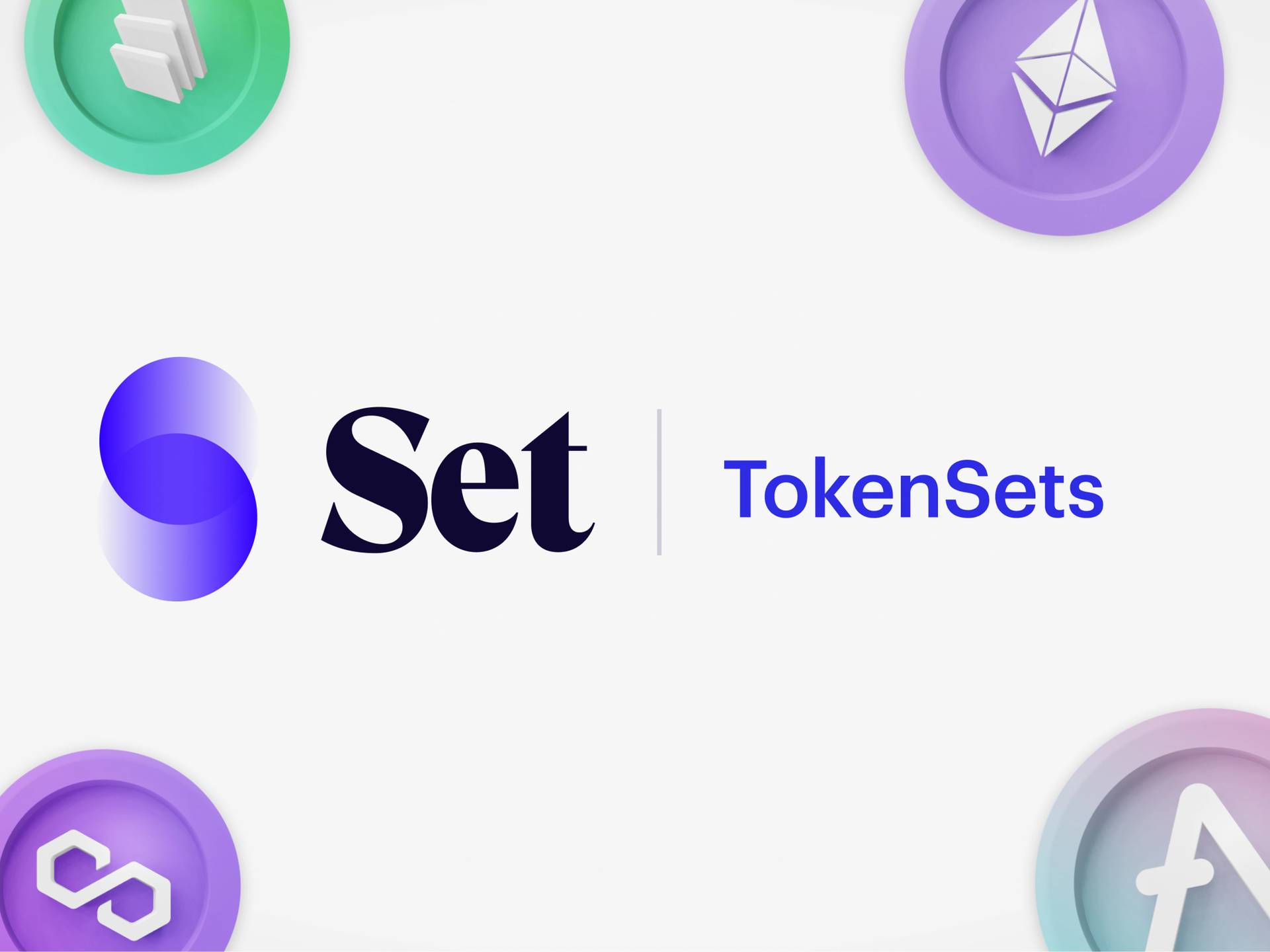위키 구독하기
Share wiki
Bookmark
TokenSets
TokenSets
TokenSets (2017년 설립)는 암호자산을 토큰화된 바스켓으로 묶어 관리 또는 거래 로직에 따라 자동으로 구조를 재조정하도록 프로그래밍된 프로토콜입니다.[8]
개요
TokenSets는 암호화폐 바스켓 및 포트폴리오 관리 서비스를 제공합니다. 다양한 자동화된 자산 관리 전략을 제공하며, 투자를 위한 ERC20 표준의 암호화폐 토큰 바스켓을 제공합니다.[6]
Set Protocols는 이더리움 기반의 비보관형 프로토콜로, 기초 자산의 포트폴리오 또는 바스켓을 나타내는 ERC-20 토큰인 Set의 생성, 관리 및 거래를 허용합니다.
각 Set은 스마트 계약에 코딩된 전략에 따라 운영되고 정기적으로 포트폴리오의 균형을 재조정합니다.
Set Protocol은 2017년 11월에 발표되었으며, 첫 번째 사용자 대상 애플리케이션인 TokenSets는 2019년 4월에 출시되었습니다.
사용자는 Set을 생성, 관리 및 성장시키는 데 도움이 되는 자산 관리자를 위한 전문적인 도구를 사용할 수 있습니다.
개발자
사용자는 개발자 문서 및 SDK를 사용하여 직접 자신만의 Set을 생성할 수 있습니다. ERC20 자산 및 전략으로 사용자 지정할 수 있습니다.
자산 관리자
사용자는 Set의 포트폴리오 관리 도구를 사용하여 수익 창출 기회에 재균형을 맞추고 활용할 수 있습니다.
방법론자
사용자는 Index Coop의 커뮤니티 및 유동성 인센티브를 통해 자신의 관리 자산을 성장시킬 수 있습니다.
TokenSets의 배경
TokenSets는 암호화폐에서 구조화된 상품이 크게 성장할 것이라는 아이디어에서 탄생했습니다.
금융에서 10년 전 ETF에는 7,000억 달러의 현금이 투자되었습니다. 오늘날 그 규모는 5조 1,000억 달러로 7배 이상 증가했습니다. 이를 인터넷 연결만 있으면 전 세계 어디에서나 글로벌 금융 시스템에 참여할 수 있는 암호화폐와 결합하면 부 창출을 위한 강력한 도구가 될 수 있습니다.
이러한 비전을 가지고, 팀은 Craft Ventures, Vy Capital, DFJ, Social Capital, Kindred Ventures, Haystack Ventures로부터 자금을 조달하여 암호화폐 시장을 위해 만들어진 스마트 금융 상품 구축을 추진했습니다.
궁극적으로 우리는 우리 자신의 문제를 해결하는 제품을 만들고 싶었습니다. 시장 상황에 따라 적절한 시기에 포지션에 진입하고 이탈할 수 있을 만큼 스마트하고, 감정적 위험 없이 차트를 바라보며 매수 및 매도 신호를 찾는 데 수 시간을 쏟을 필요가 없는 제품을 만들고 싶었습니다. 우리만 이 문제에 직면한 것은 아니었고, 암호화폐 친구들에게 물어보니 이러한 어려움을 느꼈다는 데 압도적으로 동의했습니다.
TokenSets는 사용자가 Set을 보유하는 모든 스마트 관리를 수행하는 자산을 쉽게 구매할 수 있도록 만들어졌습니다. 구매하는 각 Set의 마법은 Set Protocol 계층에서 발생합니다. 프로토콜은 암호화폐 시장 상황을 모니터링하고 선택된 전략에 따라 매수 또는 매도 신호가 있는지에 따라 자산을 관리합니다. 가격이 너무 낮을 때 공황 매도하거나 가격이 너무 높을 때 FOMO 매수하는 것에서 오는 감정적 위험을 줄이는 데 도움이 됩니다.
TokenSets의 기능
TokenSets는 암호화폐에 자동화된 자산 관리를 제공합니다. 소셜 트레이딩 세트와 로보 세트의 두 가지 유형의 세트를 제공합니다. 각 Set에는 자산 포트폴리오의 가중치를 재조정할 시점에 대한 자체 기준이 있습니다. Set의 재조정 기준이 충족되면 보유자는 재조정 전에 옵트아웃할 수 있는 유예 기간이 시작됩니다. 유예 기간 후에는 수정된 더치 옥션 프로세스를 통해 재조정이 완료될 때까지 TokenSets의 이전이 일시 중지됩니다.[7]
로보 세트
로보 세트 옵션은 트레이더가 원하는 거래 전략에 맞게 사용할 수 있는 미리 정의된 세트의 범위입니다. 여기에는 추세 거래, 범위 제한 및 매수 및 보유 세트를 포함한 하드 코딩된 전략이 포함됩니다.
소셜 트레이딩 세트
소셜 트레이딩 세트는 사람 트레이더가 실행하는 전략으로, 로보 트레이딩 세트와 동일한 방식으로 작동하지만 사람이 수행한다는 점이 다릅니다. 이러한 유형의 세트는 가장 성과가 좋은 트레이더를 선택하여 신뢰할 수 있도록 제어할 수 있습니다. 이 옵션은 TokenSets에 더 많은 토큰이 추가됨에 따라 더욱 인기를 얻을 것입니다. 더 많은 토큰을 추가하면 트레이더에게 더 많은 다양성을 제공하고 소셜 세트와 로보 세트를 차별화할 수 있습니다.
세트 재조정
재조정은 자산 포트폴리오의 가중치를 재정렬하는 프로세스입니다. 세트는 구성 요소 토큰 가격이 충분히 변하고 온체인 재조정 메커니즘을 통해 충분한 시간이 경과하면 정기적으로 할당을 조정합니다. 세트 재조정은 Kyber를 유동성 소스로 사용하지 않고 대신 공개 시장 참여자를 사용하여 유동성을 공급합니다. 이는 사용자가 불필요하고 예측할 수 없는 양의 슬리피지를 발생시키지 않도록 하기 위한 것입니다.
- Index Coop
가장 훌륭한 제품과 금융 기반을 구축하는 데 중점을 둔 협동조합입니다. Set Protocol을 기반으로 구동되는 (DPI)를 생성, 유지 관리 및 성장시킨 것으로 가장 잘 알려져 있습니다.
- TokenSets UI
Web3을 통해 Set Protocol 시스템과의 상호 작용을 가능하게 하는 오픈 소스 UI입니다. 이를 통해 누구든 Set 전략을 생성하고 Set과 상호 작용을 시작할 수 있습니다. 또한 전략 고객이 전략을 발행할 수 있는 소비자 흐름도 있습니다.
잘못된 내용이 있나요?
